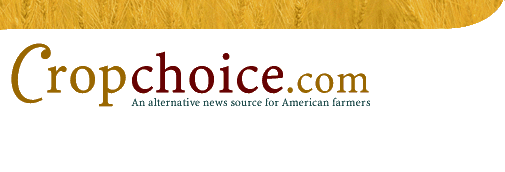(Aug. 16, 2002 -- CropChoice news) -- The following comes from the USDA Agricultural Research Service.
Tomorrow's wheat and barley plants might be equipped with genes that protect
against a formidable fungal foe, Fusarium graminarium. This destructive
fungus is responsible for a disease commonly known as wheat scab, or
Fusarium head blight, which causes plump kernels to shrivel and take on an
unhealthy, bleached, scabby appearance. Right now, there's no effective
control for this plant disease, which caused estimated losses of $2.7
billion in 1998 to 2000 in the north-central and Great Plains states.
In a "dirty trick" strategy, scientists with the Agricultural Research
Service, together with industry and university researchers, hope to use
genes from Fusarium itself to undermine the fungus.
Their approach revolves around a natural process that Fusarium uses to
invade plants. The fungus, in order to keep adding onto its rootlike growing
tip, or hypha, has to periodically tear down its old hyphal cell walls and
make new ones.
To do that, Fusarium manufactures cell wall-degrading enzymes called
chitinase and glucanase. The scientists are inserting genes into
experimental wheat plants that enable the plants to manufacture these same
enzymes. Their goal? Disrupt the Fusarium growing tip's orderly invasion by
overwhelming the fungus with chitinase and glucanase that it didn't make and
can't control.
Research geneticists Patricia A. Okubara with the ARS Root Disease and
Biological Control Research Unit in Pullman, Wash., and Ann E. Blechl at the
ARS Crop Improvement and Utilization Research Unit, Albany, Calif., are
collaborating in the research. Okubara, Blechl and co-inventors Thomas M.
Hohn of Syngenta at Research Triangle Park, N.C., and Randy M. Berka of Novo
Nordisk, Davis, Calif., are seeking a patent for the work.
Scientists have known about the role of chitinase and glucanase for years.
But Okubara and Blechl are the first to use pieces of the Fusarium microbe's
own chitinase and glucanase genes as anti-Fusarium genes in wheat. Details
are in Agricultural Research magazine on the World Wide Web at:
http://www.ars.usda.gov/is/AR/archive/aug02/gene0802.htm



